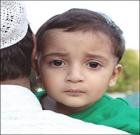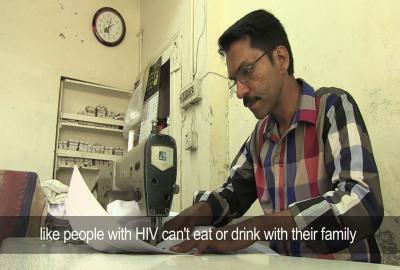About Hemophilia Foundation - Pakistan [HFP]:
For over 2 decades, the “Hemophilia Foundation – Pakistan [HFP]” has provided national leadership to improve and sustain care for people with inherited bleeding disorders, including hemophilia, von Willebrand disease, rare factor deficiencies, and inherited platelet disorders.
We save and improve lives of our community by:
- Empowering patients in order to make them community activists;
- Advocating for adequate supply of safe treatment products; and
- Educating people with bleeding disorders to help them live healthier, longer and more productive lives.
Through our network of committed volunteers and associated stakeholders, the HFP acts as a catalyst to bring about needed change. To this effect, the HFP operates through its Chapters to work with motivated health care providers, patients, their families and members of the community to foster quality health care for people with bleeding disorders.
The Hemophilia Foundation - Pakistan [HFP], a national not-for-profit organization, was established in 1995. It is a national network of patients with Hemophilia and has official recognition from the World Federation of Hemophilia [WFH] as National Member Organization [NMO]
News & Events
Country Factsheet: Hemophilia in Pakistan
In Pakistan, there are 18,000 patients with hemophilia by statistical projection. Registration of patients to various treatment facilities of hemophilia care is less than 10%. Much more still remains to be done. The reality is that 90 per cent of people with bleeding disorders in Pakistan have not yet diagnosed or still receive no treatment at all. The percentage is even higher for those with von Willebrand disease and rare factor deficiencies. The reason being lack of awareness, illiteracy and poverty Poor acceptability of disability and social taboos are additional influences which creates this "Gap" of access to diagnosis and treatment of Hemophilia in the country. An estimated 1 in 1000 women and men has a bleeding disorder [Worldwide 75% still receive very inadequate treatment or no treatment]. The treatment of hemophilia is still extremely expensive in Pakistan. As people suffering from hemophilia have a full life-span, they have to bear the heavy costs of being threaded for an entire lifetime. The average cost of treatment is usually over PKR 150,000/- [USD 1,500/-] annually. Complications can cause expenses to exceed this. The Hemophilia Foundation - Pakistan [HFP] with the great support of its local Chapter is striving to close this gap.
Positive Diaries
-
01 JanMohsin Khan

Even being a person living with Hemophilia I never felt that i cant do any thing. After working with International Organisation for almost 12 years now I'm back to my home town and initiated a new Travel & Tour business named ROAM AROUND [https://roamaround.pk/]. This is my second carrier and I'm happy that I'm following my passion.
Read More -
01 JanAmir Khan

A SOFTWARE ENGINEER FROM PAKISTAN, AMIR KHAN LIVES WITH HIS WIFE AND SON IN SIDNEY, AUSTRALIA:
Read More
Coming from three generations of family living with hemophilia A, I suffered from bleeds which caused me pain from a very early age. As an active child growing up in Pakistan, my bleeds made it difficult to do everything I wanted to do. Because of where we lived, we did not have access to hemophilia specialists or genetic testing. I wasn’t officially diagnosed with hemophilia until I was 16. It was then that I started treatment with factor on-demand. While I was living in Pakistan, prophylaxis was not widely available, so I treated my hemophilia with on-demand treatment. When I moved to the Australia five years ago, I had bleeds every other day, which made me a little depressed. Eventually, I talked with my clinicians, set goals, and discussed ways for me to stay healthy. That’s when they introduced me to prophylaxis treatment.
“For me, the greatest benefit of prophylaxis treatment has been that my bleeds have been substantially reduced, even now that I am more active. I spend less time worrying about my bleeds, which helps me enjoy my life.” -
17 AprMr. Malik

MASOOD HAS SEVER HEMOPHILIA A:
Read More
“Growing up in developing country with hemophilia meant more than discomfort, pain or disability to me. It also meant isolation and detachment. I remember periods spent at home or in bed, away from friends and being excluded from school activities. At times, people were reluctant to include me in games. I give my parents great credit for teaching me that life is manageable. In many ways hemophilia made me stronger and gave me the drive to excel. Living with a chronic disease teaches you how to persevere and cope with adversity. I consider myself as community activist and advocate in achieving treatment for all those living with bleeding disorders in Pakistan.” -
10 MarMiss Sara Zahid

SARA ZAHID HAS SEVERE VON WILLEBRAND DISEASE: With an early diagnosis, careful monitoring and the right treatment, Sara leads a full, active life.
Read More
“My parents did a great job of raising me to be ‘normal.’ While I couldn’t do sports or gym class growing up, they cultivated my love of music and a passion for learning,” says Sara. “I have to be extra careful and more aware of my physical limitations, but I still like to challenge myself physically and stay active.” -
10 FebHassan Shah

Hassan Shah was born in small village near Kasur to parents Hamid Shah and Shah Bibi, and was symptomatic with an inability to clot almost immediately. However, because the family was unaware of any hemophilia in their history, local doctors had a difficult time pinpointing the problem for months. Hassan’s rare bleeding disorder diagnosis, called Hemophilia (Factor XII), came while the family was living in Kasur, 5 months later.
Read More
Told by their doctors that they should move from Kasur immediately after Hassan’s diagnosis due to factor unavailability and the legality of introducing rare medicines/products into a big city such as Lahore or Karachi, the family moved to Lahore for a short time where both Hamid Shah and Shah Bibi were diagnosed with congenital hypofibrinogenemia (low factor I levels). It occurred to them that in places like Pakistan, the mortality rate of children born into circumstances that would not allow them to receive proper medical care, would potentially be tragically high. It caused them a great deal of concern and an eagerness and desire to become involved in bleeding disorder outreach in small cities.
Reality Clicks
Hemophilia Foundation - Pakistan [HFP] with the support of NNHF got the services of a professional photographer who traveled across the country to meet the community members. The photographer on behalf of HFP captured the real face of the disease through its camera lens. This pictorial collection portrays the challenges, treatment options, blood screening, community success stories and psychosocial aspect of Hemophilia patients in Pakistan.












